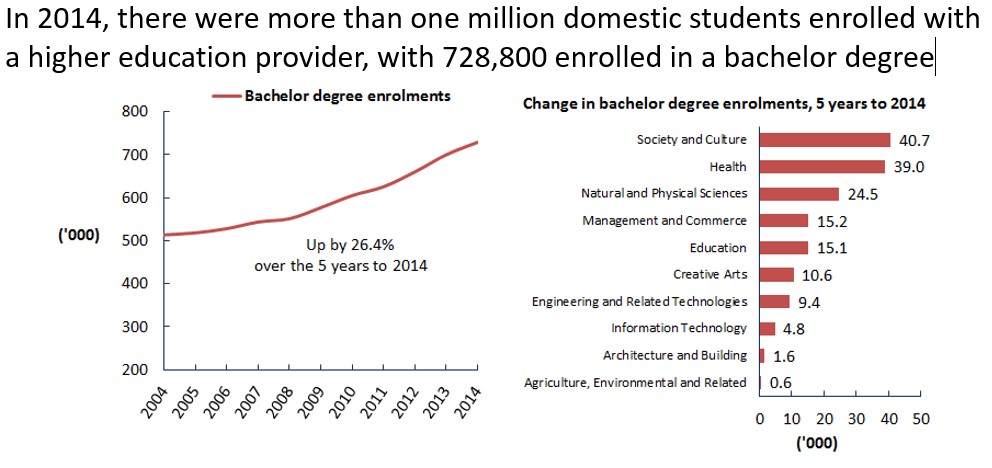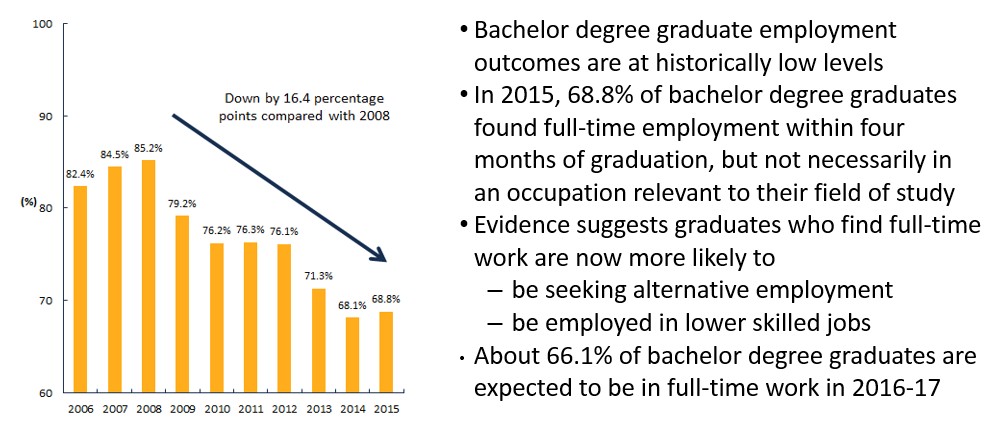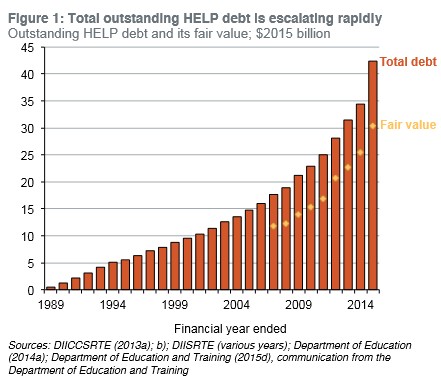The fissures in Australia’s demand-driven university system continue to widen, with The Australian revealing that drop-out rates for first year students has hit an all-time high one-in-five:
The rise in attrition came as domestic student enrolments topped more than one million for the first time in 2014, with an increase to 1,076,000 last year…
While the national average drop-out rate for first years was 21.09 per cent, the adjusted rate was a more modest 15.25 per cent when students changing course were taken into account…
Grattan Institute higher education policy expert Andrew Norton said there was a correlation between drop-out rates and increasing enrolments, particularly among low-ATAR students. He said rising numbers of students with poor school performance were behind the rise in the overall attrition…
Mr Norton said attrition rates of more than 20 per cent were too high. “The question is: are universities actually informing students of the risks they are taking on, particularly studying online, and are they being responsible in taking on students who are at high risk of not completing?”
Seriously, what did we expect?
The whole model is set-up so that it rewards universities for enrolling as many students as possible, since they get paid for each student enrolled, irrespective of whether the student is capable or completes the course, or can get a job in the field of study. The student then owes the government the amount of the loan, but they only have to repay it when their income reaches a certain threshold. And since many never reach that level of income, they never pay, so the taxpayer foots the bill instead.
This is why tertiary entrance scores have fallen to appallingly low levels, with university offers to students with ATARs below 50 trebling in just five years.
It is why we have seen a rapid escalation of students undertaking bachelor degrees:

Despite worsening job prospects:

And it is why we have seen total outstanding HELP debt escalate rapidly, placing increasing strain on the Budget since much of it won’t be repaid:

The sad truth is that Australia’s universities have morphed from educational institutions providing a public good into quantity-based degree factories, whereby they teach as many students as possible to accumulate Commonwealth government funding through HELP/HECS debts. Quality of teaching, and students’ ability to secure subsequent employment, remain distant priorities.
Australians need to ask themselves: what is tertiary education actually for and who does it benefit? Is it a public good used to boost the nation’s productivity and prosperity, or is it merely another commodity to be sold for short-term profit?

